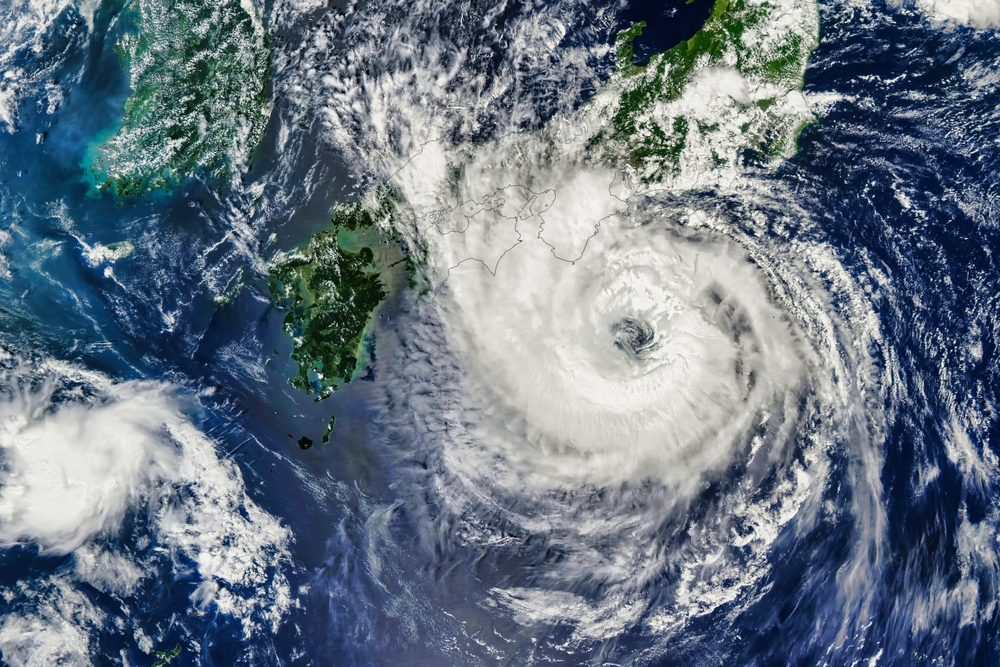Devastating Typhoons in Japan

Typhoon Season
Typhoons occur when moisture from warm seawater evaporates, causing a low-pressure system with sustained wind speed. After the hot summer days, the seawater’s temperature increases, resulting in stronger and more frequent typhoons in autumn. From July to early October, Japan sees many typhoons pass through its vicinity.
Although the number of typhoons in July exceeded the annual average this year, the number of typhoons that hit Japan has not been increasing overall. However, we often see mass destruction and casualties caused by typhoons in recent years. This is partly because Japan has long been a country prone to natural disasters. In addition, some studies show that climate change has made typhoons more destructive and catastrophic.
Catastrophic Typhoons, Tornados, and Heat Waves
This August, temperatures in Japan reached a record-breaking high of 41.8 degrees Celsius. The deadly heat began in June and lasted until September, much longer than usual. In August, Tokyo saw 10 consecutive days of temperatures above 35 degrees Celsius. According to Japan’s Fire and Disaster Management Agency, 99,573 people were taken to the hospital for heatstroke between May and September. Takashi Shimazaki, the section manager of the health department in Nerima ward, said the elderly are more prone to developing heatstroke as they “often don’t feel heat as much, have more difficulty regulating body temperature, and don’t notice thirst as easily.”
As record-breaking high temperatures were recorded throughout Japan, a strong typhoon, Typhoon No. 15, hit Japan. It started causing significant damage to the area before coming ashore, with record-breaking rainfall across the east and west Pacific coast. Miyazaki prefecture experienced 465.5 mm of rain in just 24 hours, exceeding September’s monthly average in just one day, and landslides and floods caused significant damage to houses and highways.
The typhoon also caused the strongest tornado ever recorded in Japan to strike Shizuoka prefecture. This caused 89 people to be injured, and 1,900 buildings to be damaged or flooded. A resident from Makinohara, one of the most severely impacted towns in Shizuoka, spoke to NHK and said that he “was blown away in an instant, as if dynamite had been thrown in.” The former head of the Shizuoka Local Meteorological Office, Hayakawa Kazuhiro, warned that due to the effects of global warming, tropical storms and typhoons will be stronger, resulting in increased risk of tornadoes.
Natural Disasters and Mental Health
Natural disasters cause visible damage to infrastructure, but behind closed doors, many survivors suffer in silence. Short-term psychological effects of natural disasters may include shock, fear, confusion, trouble sleeping, trouble concentrating, exhaustion, and high stress. As time goes on, this may lead to survivor’s guilt, depression, PTSD, and grief. The effect that natural disasters have may vary from individual to individual, depending on their past experiences and the support available immediately after. Recognizing and managing stress by receiving the help and support individuals need helps them to recover and heal over time.
A study published by PLOS One showed that brain imaging on children whose parents were pregnant at the time of Superstorm Sandy showed significant enlargement in a part of the brain called the basal ganglia. The basal ganglia are involved in several functions, including emotional regulation, and other studies have linked them to depression. The findings showed that the climate crisis is causing children to be negatively impacted before they are even born. Pregnant people are especially vulnerable to climate change and disasters, and this study further proves the need for better education about climate change and its risks.
The Health and Global Policy Institute (HGPI), a non-profit private think tank, has been focused on advocacy and enacting policy change regarding mental health. They found that the number of individuals with mental health disorders in Japan has been increasing each year. The Great Hanshin-Awaji Earthquake and the East Japan Earthquake have both been recognized as significant causes of mental disorders. HGPI has made several recommendations to improve the structure of mental health support from agencies, including inter-municipality collaborative work. Municipalities that have experience in disaster relief can work with other municipalities by conducting study sessions and creating forums where mental health providers can share their thoughts, feelings, and lessons they have learned in the past.
Written by まりか
